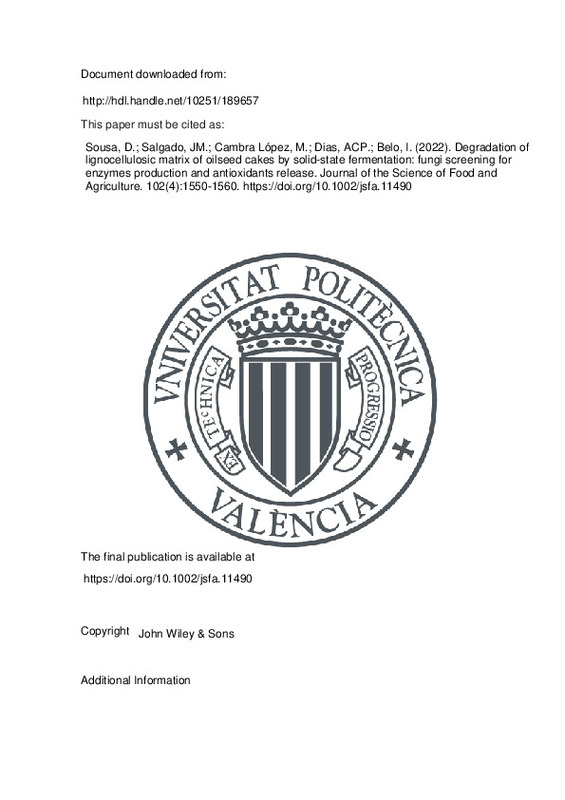JavaScript is disabled for your browser. Some features of this site may not work without it.
Buscar en RiuNet
Listar
Mi cuenta
Estadísticas
Ayuda RiuNet
Admin. UPV
Degradation of lignocellulosic matrix of oilseed cakes by solid-state fermentation: fungi screening for enzymes production and antioxidants release
Mostrar el registro completo del ítem
Sousa, D.; Salgado, JM.; Cambra López, M.; Dias, ACP.; Belo, I. (2022). Degradation of lignocellulosic matrix of oilseed cakes by solid-state fermentation: fungi screening for enzymes production and antioxidants release. Journal of the Science of Food and Agriculture. 102(4):1550-1560. https://doi.org/10.1002/jsfa.11490
Por favor, use este identificador para citar o enlazar este ítem: http://hdl.handle.net/10251/189657
Ficheros en el ítem
Metadatos del ítem
| Título: | Degradation of lignocellulosic matrix of oilseed cakes by solid-state fermentation: fungi screening for enzymes production and antioxidants release | |
| Autor: | Sousa, Daniel Salgado, José M. Dias, Alberto C. P. Belo, Isabel | |
| Entidad UPV: |
|
|
| Fecha difusión: |
|
|
| Resumen: |
[EN] BACKGROUND: Vegetable oils are yearly produced in large amounts generating solid by-products, the oilseed cake (OC). OCs are lignocellulosic materials that have been used for animal feed with some limitations due to ...[+]
|
|
| Palabras clave: |
|
|
| Derechos de uso: | Reserva de todos los derechos | |
| Fuente: |
|
|
| DOI: |
|
|
| Editorial: |
|
|
| Versión del editor: | https://doi.org/10.1002/jsfa.11490 | |
| Código del Proyecto: |
...[+] |
|
| Agradecimientos: |
The authors thank the Portuguese Foundation for Science and Technology (FCT) under the scope of the strategic funding of UIDB/BIO/04469/2020 and UIDB/04033/2020 units.
Daniel Sousa was supported by the FCT (PD/BD/135328/2017), ...[+]
|
|
| Tipo: |
|







![[Cerrado]](/themes/UPV/images/candado.png)


